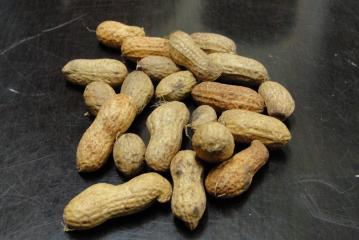
Researchers at the International Crops Research Institute for the Semi-Arid Tropics (ICRISAT) in Hyderabad have developed dual strategies to keep groundnuts almost free of aflatoxin - a toxin produced by the fungi Aspergillus flavus and Aspergillus parasiticus - contamination.
While one strategy prevents groundnuts from being infected by the fungus thereby preventing the toxins from being produced, the other strategy prevents the fungus from producing the toxin even if groundnuts somehow get infected with the fungus.
Genetic engineering approaches were used for inserting two alfalfa genes into groundnut plants to enhance immunity against fungal infection and growth. Preventing aflatoxin production even in case of any infection was achieved through a plant-induced gene silencing technique.
While both strategies showed promising results, the ultimate goal is to combine the two traits into a single variety to offer double protection so that groundnuts do not accumulate any aflatoxin or the amount of toxin is well within permissible limits at or after harvest.
To further prevent toxin production even when groundnuts get infected with the fungus, the researchers designed two small RNA molecules that silence the fungal genes which produce aflatoxin.
When the fungus and plant come in contact with each other the small RNA molecules from the plant enter the fungus and prevent it from producing aflatoxin.
About 40 hours after infection with Aspergillus, six lines with alfalfa genes showed less than 1 part per billion (ppb) of toxin and another five lines showed 1-4 ppb compared with over 3,000 ppb in groundnuts that did not have these genes.
Similarly, six lines carrying the RNA molecules, the toxin present was less than 1 ppb and two other lines showed 1-4 ppb of toxin.
It is much lower than the Indian and U.S. safety limit of 20 ppb and meets even the stringent European safety limit of 4 ppb.